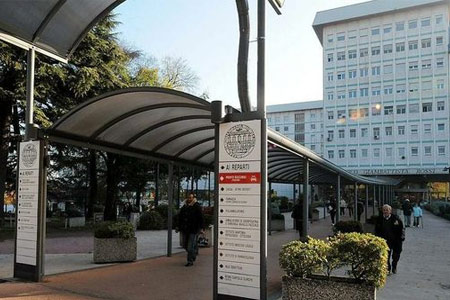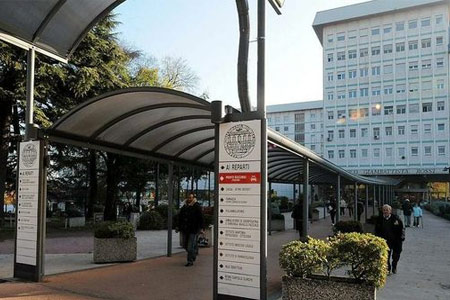- Authors:
-
Chiarini, A.; Armato, U.; Gui, L.; Yin, M.; Chang, S.; Dal Prà, I.
- Title:
-
Early divergent modulation of NLRP2’s and NLRP3’s inflammasome sensors vs. AIM2’s one by signals from Aβ•Calcium-sensing receptor complexes in human astrocytes
- Year:
-
2025
- Type of item:
-
Articolo in Rivista
- Tipologia ANVUR:
- Articolo su rivista
- Language:
-
Inglese
- Referee:
-
Sì
- Name of journal:
- BRAIN RESEARCH
- ISSN of journal:
- 1872-6240
- N° Volume:
-
1846
- Page numbers:
-
1-23
- Keyword:
-
human astrocytes, NLRP2, NLRP3, AIM2, amyloid-beta, calcium-sensing receptor
- Short description of contents:
- Alzheimer's disease (AD), the most prevalent human dementia, is driven by accruals of extracellular Abeta42 senile patches and intracellular neurofibrillary tangles of hyperphosphorylated Tau (p-Tau) proteins. AD’s concurrent neuroinflammation is prompted by innate immunity-related cytosolic protein oligomers named inflammasomes. Upon proper “first” (priming) and “second” (activating) signals, inflammasomes overproduce proinflammatory Interleukin (IL)-1beta, and IL-18 while cleaving pyroptosis-promoting Gasdermin D’s N-terminal fragments. Our earlier studies highlighted that in pure monocultures, exogenous Abeta25-35-treated nonproliferating human cortical astrocytes (HCAs) made and released surpluses of endogenous Abeta42-oligomers (-os) and p-Tau-os, just as alike-treated human cortical neurons did. Abeta25-35-exposed HCAs also over-released NO, VEGFA, and IL-6. Abeta•CaSR (Beta•Calcium-Sensing Receptor) complexes generated intracellular signals mediating all such neurotoxic effects since CaSR’s negative allosteric modulators (aka NAMs or calcilytics, e.g., NPS2143) fully suppressed them. However, it had hitherto remained unexplored whether signals from Abeta•CaSR complexes also induced the early expression and/or activation of NOD-like 2 (NLRP2) and 3 (NLRP3) and of PYHIN absent in melanoma 2 (AIM2) inflammasomes in monocultured HCAs. To clarify this topic, we used in-situ-Proximity Ligation, qRT-PCR, double antibody arrays, immunoblots, and Caspase 1/4 enzymatic assays. Abeta•CaSR complexes quickly assembled on HCAs surface and issued intracellular signals activating Akt and JAK/STAT axes. In turn, the latter upregulated NLRP2 and NLRP3 PRRs (pattern recognition receptors) yet downregulated AIM2. These effects were specific, being significantly hindered by NPS2143 and inhibitors of PI3K (LY294002), AMPKalpha (Dorsomorphin), mTOR (Torin1), and JAK/TYK (Brepoticinib). A wide-spectrum inhibitor, Bay11-7082, intensified the Abeta•CaSR/Akt/JAK/STAT axis-driven opposite control of NLRP3's and AIM2's PRR proteins without affecting NLRP2 PRR upregulation. However, the said effects on the PRRs proteins vanished within 24-h. Moreover, Abeta•CaSR signals neither concurrently changed ASC, pro-IL-1beta, and Gasdermin-D (holo- and fragments) protein levels and Caspases 1 and 4 enzymatic activities nor induced pyroptosis. Therefore, Abeta•CaSR cues acted as "first (priming) signals" temporarily increasing NLRP2 and NLRP3 PRRs expression without activating the corresponding inflammasomes. The neatly divergent modulation of NLRP3’s vs. AIM2’s PRR proteins by Abeta•CaSR cues and by Bay11-7082 suggests that, when bacterial or viral DNA fragments are absent, AIM2 might play “anti-inflammasomal” or other roles in HCAs. However, Bay11-7082’s no effect on NLRP2 PRR overexpression also reveals that CaSR’s downstream mechanisms controlling inflammasomes’ sensors are quite complex in HCAs, and hence, given AD’s impact on human health, well worth further studies.
- Web page:
-
https://www.sciencedirect.com/science/article/pii/S0006899324005377
- Product ID:
-
142091
- Handle IRIS:
-
11562/1144251
- Last Modified:
-
October 30, 2024
- Bibliographic citation:
-
Chiarini, A.; Armato, U.; Gui, L.; Yin, M.; Chang, S.; Dal Prà, I.,
Early divergent modulation of NLRP2’s and NLRP3’s inflammasome sensors vs. AIM2’s one by signals from Aβ•Calcium-sensing receptor complexes in human astrocytes
«BRAIN RESEARCH»
, vol.
1846
,
2025
,
pp. 1-23
Consulta la scheda completa presente nel
repository istituzionale della Ricerca di Ateneo 








